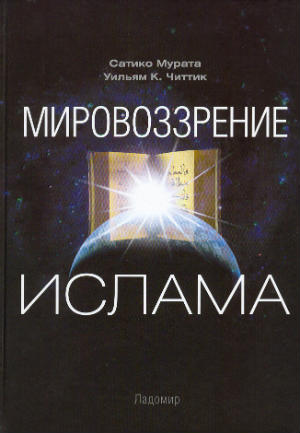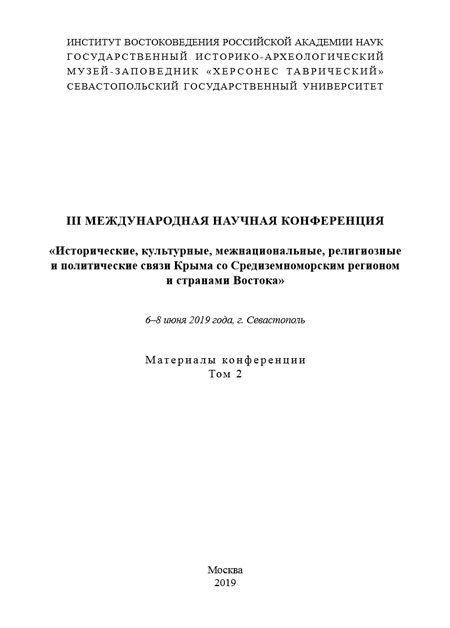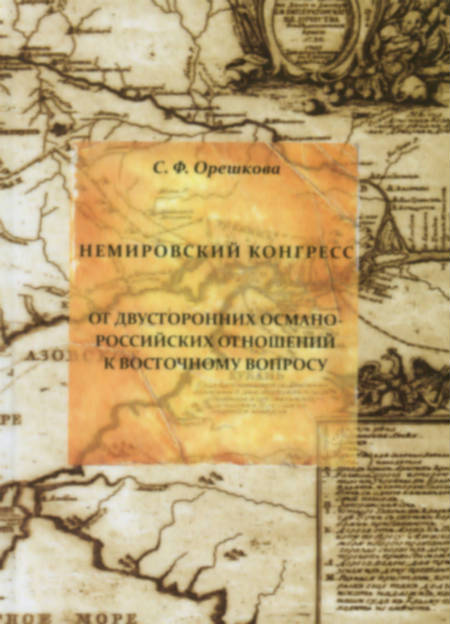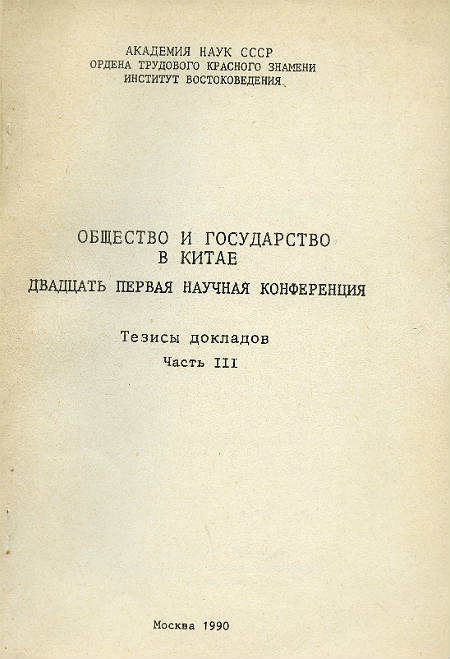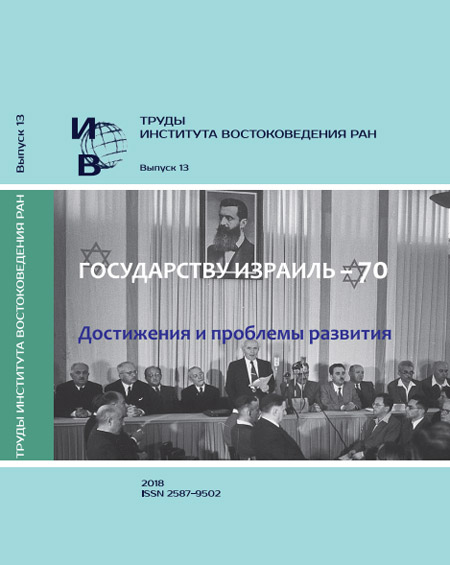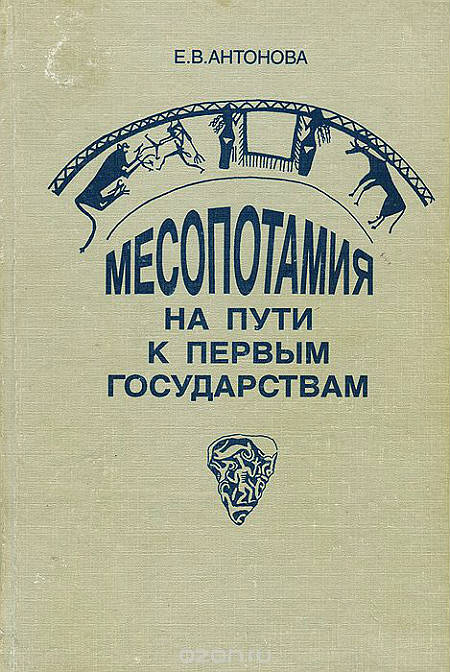Book
Mesopotamia on the Way toward Statehood
Москва, 1998, 224 p.
The book entitled “Mesopotamia on the Way toward Statehood” makes an attempt to characterize the history of one of the most interesting regions of the world from the beginning of the late prehistoric period to the formation of early states, i.e., from the 6th to the late 4th mil. B.C. The archaeological record interpreteed from different viewpoints was the main source of research. Data on economy, forms of specialized activities, exchanges, settlements, dwellings, burials, cult structures, and motifs of figurative art are presumed informative of social structure. In interpreting these data the author proceeds from hitherto advanced hypotheses concerning the social structure of well-developed food-producing societies and its evolution which led to state formation. Recent decades have seen remarkable contributions to the understanding of these processes. Ideas of egalitarianism in the late prehistoric communities, their secluded life and self-sufficiency right up to state formation are no longer indisputable. Cultural anthropologists and sociologists suggest various patterns of social evolution depending on types of economy, ecosystems and specific traditions. Owing to a lack of sufficient information on social structure, modelling social processes on the basis of archaeological evidence is far from easy. This, however, can be remedied by purposeful carefully planned excavations as well as cooperation between different branches of scholarship. Since the 1970s such investigations have become much more numerous and the resulting reconstructions of the way of life and social system of the bearers of the Halaf, Samarra, Ubaid, Uruk and Djemdet Nasr archaeological cultures more convincing. Regrettably, Russian scholarship did not pay much attention to the studies by foreign colleagues that remain virtually unknown in this country.
Therefore, the author aims not only at representing her own view on the social changes which caused the rise of the early Mesopotamian states but also at acquainting the Russian reader with the achievements of foreign scholars. Special attention is paid to the methods of extracting historical data from the “silent” archaeological remains. Their deep-going analysis is supplemented with ethnological data and references to written sources from later periods. To reconstruct the process of state formation the author derives information mostly from figurative art.
Chapter 1 deals with the history of Mesopotamia in the 6th – early 4th mil. B.C. Some scholars refer to the Halaf culture as a chiefdom. According to them, this can be proved by traces of highly developed craftsmanships and exchanges, the two-level settlement pattern, the presence of prestige things, which could indicate a high status. However, one cannot be sure about the social organization of the Halafians, it is even doubtful whether theirs was a complex society. It is more likely that the related settlements formed local groups united by reciprocation. There were no permanent power centres, and decisions were taken by representatives of autonomous settlements at meetings.
It can be assumed that it was the bearers of the earlier Samarra culture (the 6th – early 5th mil. B.C.) that played a decisive role in the formation of complex societies in Central Mesopotamia. They built the first irrigation structures which made it possible to secure more stable harvests. To the best of our knowledge, the living standards of Samarra communities varied. Certain artefacts, judging from their materials and manufacture, are seemingly of prestige character. The Samarra culture was presumably one of the components to make up the Ubaid culture of the 5th – first half of the 4th mil. B.C.
The Ubaid culture and the related complexes were among the first to emerge in Southern Mesopotamia, where later the early states were founded. The cultures in question probably saw the formation of specialization as well as meagre resources promoted close contacts between the population of different zones.
A two-level settlement organization, irrigation works, highly developed pottery-making, exchanges, and public structures speak for chiefdom-type organization at the Ubaid time. Judging from a later tradition, life in a cluster of settlements was guided by a body of elected chieftains govering from a central settlement. Regular meetings in this settlement dealt with problems of economic life and defence and were accompanied by religious ceremonies. There must have been sacred objects and places, which symbolized the unity of people living within the limits of neighbourhood. Figurative art is indicative of the fact that community members both acknowledged and emphasized the significance of authority.
Chapter 2 is devoted to the phenomena characterizing the Uruk-Djemdet Nasr society. The study calls for joint efforts of historians, archaeologists, philologists, sociologists and specialists in natural sciences. The wideninig of geographical range of the investigation is likely to be fritful, since many phenomena within the limits of Greater Mesopotamia, especially from the Susiana Plain and Syria, are worth examining. The author looks upon the information on the economy, social organization and ideology of the rising states, also providing data on the irrigation hitherto never used on a large scale, the emergence of specialized craftsmanship, professional art and well-developed architecture.
The location of settlement clusters, a three-level hierarchy of settlements, as well as the rising of towns with temples, other public buildings and houses of the elite (very few are as yet known) imply the formation of small states which I.M. Diakonoff tends to call “nomes”. The “nome” life was regulated by the temple administration associated with all the functionaries. Apart from the archaeological record, it is written sources from a later date shedding light on social systems akin to primitive democracy that enable one to recunstruct the Ancient Mesopotamian social structure.
A special section deals with redistribution and forms of registration and control, with various signs and seals used in stock-taking the products and ensuring their safekeeping. Another section analyses exchange and the phenomenon of the “Uruk expansion”. The author is inclined to support the researchers who do not believe that the “Uruk colonization” was a result of state formation, when the life of community was not strictrly regulated and individual groups were permitted a comfortable margin of initiative (which did not exclude contacts with authorities).
The other sections dealing with the image of the leader and “scenes of everyday life” represented on figurative monuments give an account of the ideology of ancient states. The leader was elected from among the elite. He was no sacral figure, but played the role of a mediator between the population of the “nome” and its deity-protector securing the existence of the community. The so-called “scenes of everyday life” enable us to think that this sort of arrangement had come into being in the late 4th mil. B.C., long before the myth that doomed man to serve gods was ever recorded. The arrangement accounted for and justified differences in the social status of various groups.
In conclusion, the author examines the background of both the close links between the “nomes” and the formation of a “league” with Nippur as the main cult and, to some extent, political centre. This “league” came as a result of systematic contacts between independent “nomes”, which also led to the emergence of a common Sumerian culture.


